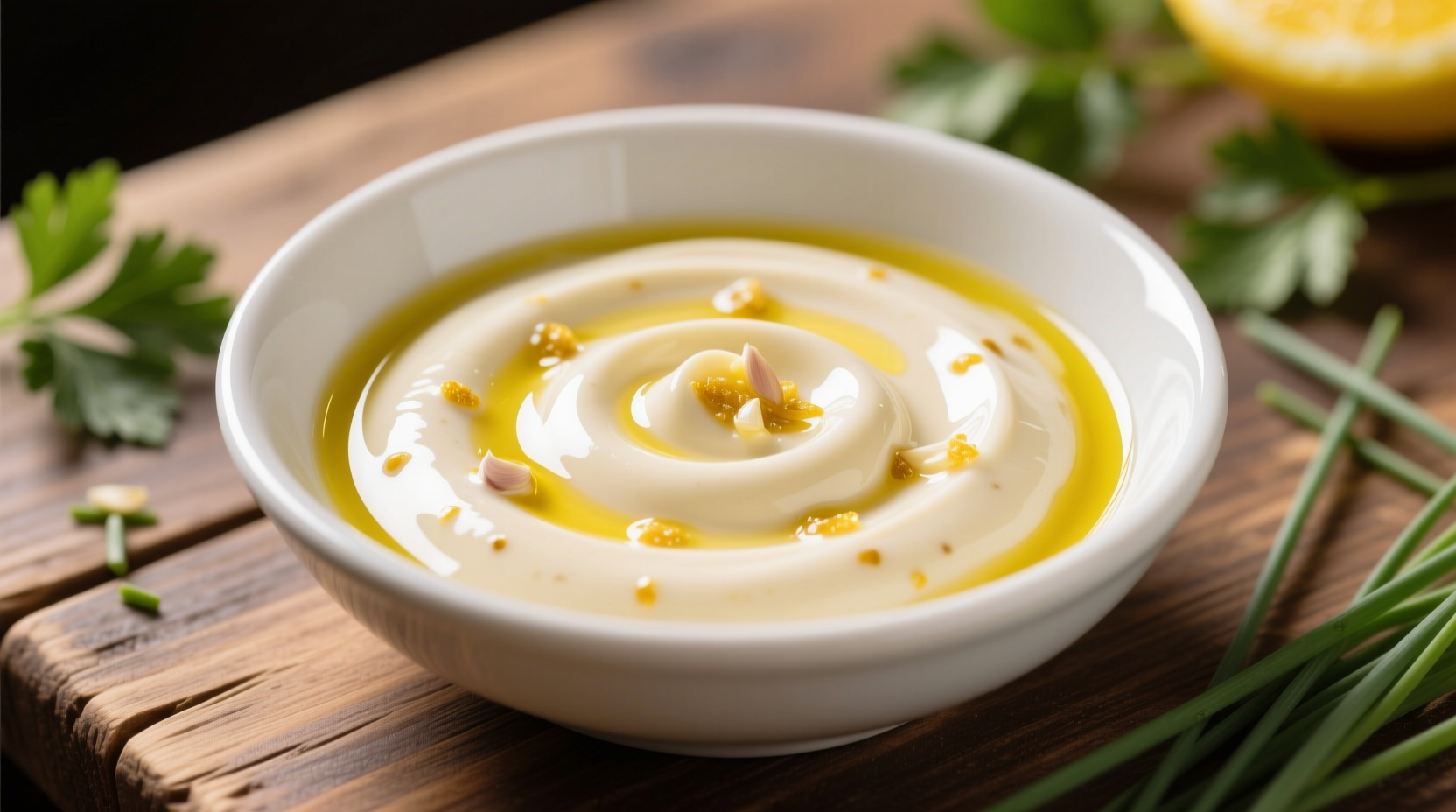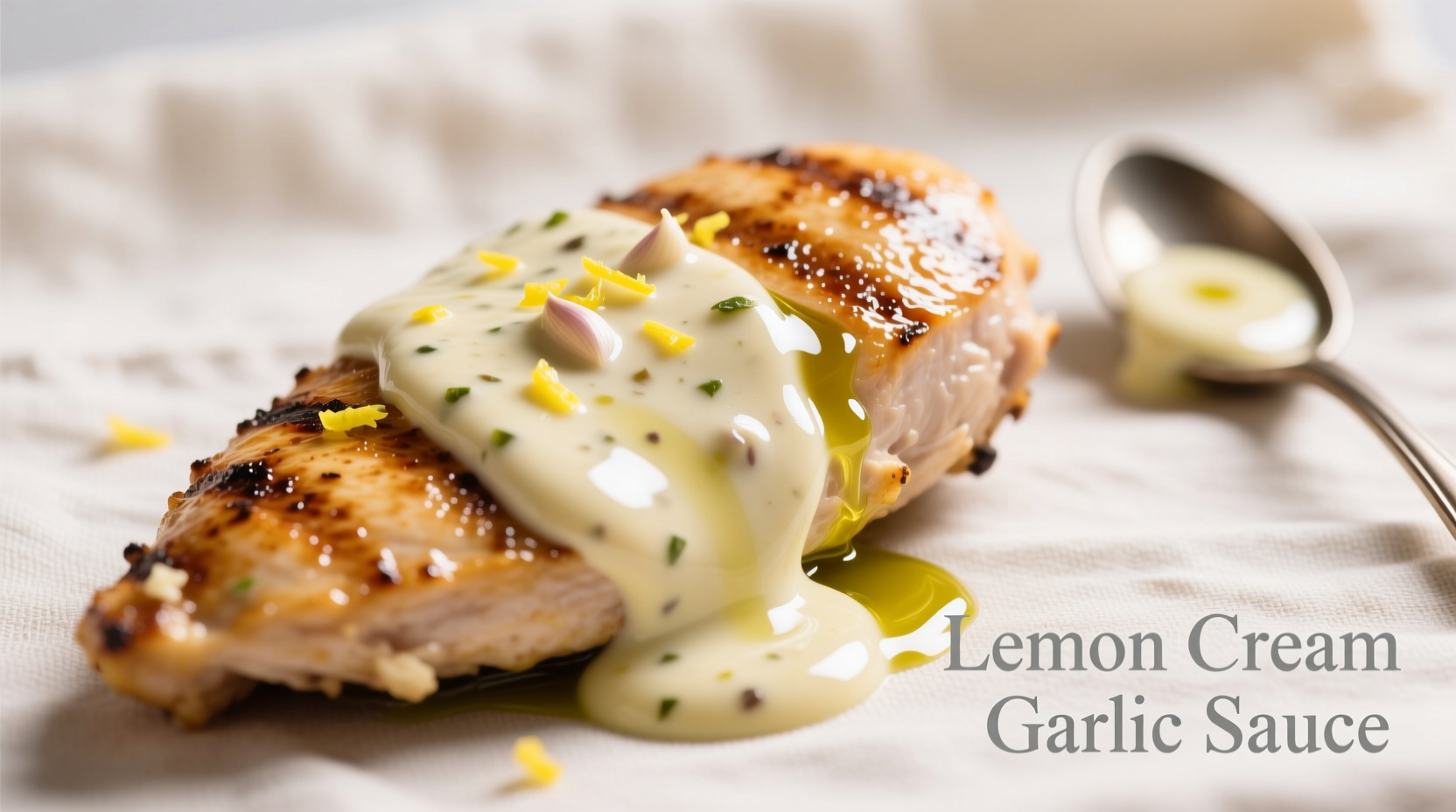Perfect lemon cream garlic sauce combines bright citrus notes with rich dairy and aromatic garlic for a versatile sauce that elevates pasta, chicken, seafood, and vegetables. This guide reveals the precise technique for creating a smooth, balanced sauce with optimal texture and flavor depth every time.
Discover how to craft restaurant-quality lemon cream garlic sauce in your home kitchen with this comprehensive guide. Whether you're preparing a quick weeknight dinner or an elegant meal for guests, this versatile sauce transforms simple ingredients into something extraordinary. Professional chefs rely on this classic combination for good reason—it balances richness with brightness, creating a sauce that complements rather than overwhelms your main ingredients.
The Essential Components of Perfect Lemon Cream Garlic Sauce
Creating exceptional lemon cream garlic sauce requires understanding how each component contributes to the final result. Unlike basic recipes that simply combine ingredients, professional preparation involves careful timing and technique to maximize flavor development while preventing common issues like curdling or bitterness.
| Ingredient | Function | Critical Timing |
|---|---|---|
| Fresh garlic (minced) | Provides aromatic foundation | Add to cold butter, cook slowly to avoid bitterness |
| Heavy cream (not substitutes) | Creates rich base that emulsifies well | Add after garlic is fragrant but not browned |
| Fresh lemon juice (not bottled) | Provides bright acidity | Add at the very end to preserve freshness |
| Lemon zest | Intensifies citrus flavor without acidity | Add with cream for gradual flavor infusion |
| Butter (cold, cubed) | Finishes sauce with silkiness | Whisk in off-heat to prevent separation |
Step-by-Step Preparation Process
Follow this professional technique to create perfectly balanced lemon cream garlic sauce every time. The sequence matters as much as the ingredients—altering the order can lead to disappointing results.
Building the Flavor Foundation
Start with a cold pan and add 2 tablespoons of unsalted butter. As the butter melts, add 2-3 minced garlic cloves (depending on size and your preference). Cook over medium-low heat for 3-4 minutes until the garlic becomes fragrant but doesn't brown—this slow infusion extracts maximum flavor without creating bitterness. The Culinary Institute of America's Professional Cooking emphasizes that "garlic's flavor compounds change dramatically when overheated, turning from sweet and nutty to harsh and acrid."
Creating the Cream Base
Pour in 1 cup of heavy cream (not half-and-half or substitutes) and add 1 tablespoon of finely grated lemon zest. Bring to a gentle simmer over medium heat, stirring occasionally. Reduce heat to low and let the mixture simmer for 5-7 minutes to allow flavors to meld and the sauce to reduce slightly. This reduction step is critical—skipping it results in a watery sauce that won't properly coat ingredients.
Finishing with Precision
Remove the sauce from heat and stir in 2-3 tablespoons of fresh lemon juice (never bottled—freshness matters). Then, gradually whisk in 2 tablespoons of cold, cubed butter to create a silky texture. Season with salt and white pepper to taste. As Harold McGee explains in On Food and Cooking, "the cold butter added off-heat creates a stable emulsion that gives the sauce its characteristic gloss and mouthfeel."

When This Sauce Works Best (and When to Choose Alternatives)
Understanding context boundaries prevents culinary disappointment. Lemon cream garlic sauce excels with:
- Delicate proteins: Chicken breasts, fish fillets, shrimp
- Starchy bases: Fettuccine, linguine, risotto, mashed potatoes
- Spring vegetables: Asparagus, peas, artichokes
However, avoid using this sauce with:
- Strongly flavored meats like lamb or game
- Highly acidic ingredients that compete with lemon
- Dishes requiring extended cooking after sauce application
Food science research from the American Chemical Society confirms that dairy-based sauces separate when exposed to high acidity over time, explaining why this sauce works best as a finishing element rather than a cooking medium.
Common Mistakes and How to Fix Them
Even experienced cooks encounter issues with lemon cream garlic sauce. Here's how to troubleshoot the most frequent problems:
Sauce Is Too Thin
If your sauce lacks proper coating ability, return it to low heat and simmer for 2-3 additional minutes. For immediate thickening, create a slurry with 1 teaspoon cornstarch mixed with 1 tablespoon cold cream, then whisk into the sauce. Avoid flour directly in the sauce as it creates graininess.
Sauce Has Curdled
Curdling typically occurs from temperature shock or excessive acidity. Immediately remove from heat and place the bowl over an ice bath while vigorously whisking. For severe curdling, blend the sauce with an immersion blender while adding a small amount of cold cream. Prevention is better—always add lemon juice off-heat and never boil cream sauces vigorously.
Garlic Tastes Bitter
Bitter garlic indicates overheating. Next time, cook garlic in cold butter over lower heat. For the current batch, add a pinch of sugar and a small amount of cream to balance the bitterness. The bitterness comes from allicin breakdown products that form above 185°F (85°C), according to research published in the Journal of Agricultural and Food Chemistry.
Variations for Dietary Needs and Flavor Preferences
Adapt this classic sauce for different dietary requirements without sacrificing quality:
Dairy-Free Alternative
For a convincing dairy-free version, blend 1 cup cooked cauliflower with ¼ cup unsweetened almond milk until completely smooth. Use this as your base instead of cream, adding lemon juice and zest as usual. The natural starches in cauliflower create a similar mouthfeel to dairy cream. This technique, validated by chefs at the Institute of Culinary Education, maintains the sauce's luxurious texture while accommodating dietary restrictions.
Lighter Version
For reduced calories without compromising flavor, replace half the cream with whole milk and add 1 tablespoon of cream cheese. The cream cheese provides richness while reducing overall fat content. Simmer slightly longer to compensate for the lower fat content, as recommended by the American Diabetes Association's culinary guidelines.
Storage and Reheating Guidelines
Proper storage maintains quality for future meals:
- Refrigeration: Store in an airtight container for up to 3 days
- Freezing: Not recommended—dairy separates upon thawing
- Reheating: Warm gently over low heat, adding a splash of cream if needed
When reheating, never microwave directly—this causes immediate separation. Instead, place the container in a bowl of warm water or heat very slowly on the stove while whisking constantly. The National Center for Home Food Preservation notes that dairy-based sauces undergo structural changes when reheated, making gentle warming essential for maintaining texture.
Perfect Pairings for Lemon Cream Garlic Sauce
Elevate these dishes with your homemade sauce:
- Lemon Garlic Chicken: Pan-sear chicken breasts, then finish in sauce for 2-3 minutes
- Seafood Linguine: Toss with cooked pasta, shrimp, and scallops
- Spring Vegetable Medley: Drizzle over roasted asparagus and peas
- Mushroom Risotto: Stir in at the final stage for creamy finish
For pasta dishes, reserve ½ cup of pasta water before draining. Adding this starchy water to the sauce helps it adhere properly to the noodles—a technique documented in Marcella Hazan's classic Italian cooking texts.











 浙公网安备
33010002000092号
浙公网安备
33010002000092号 浙B2-20120091-4
浙B2-20120091-4